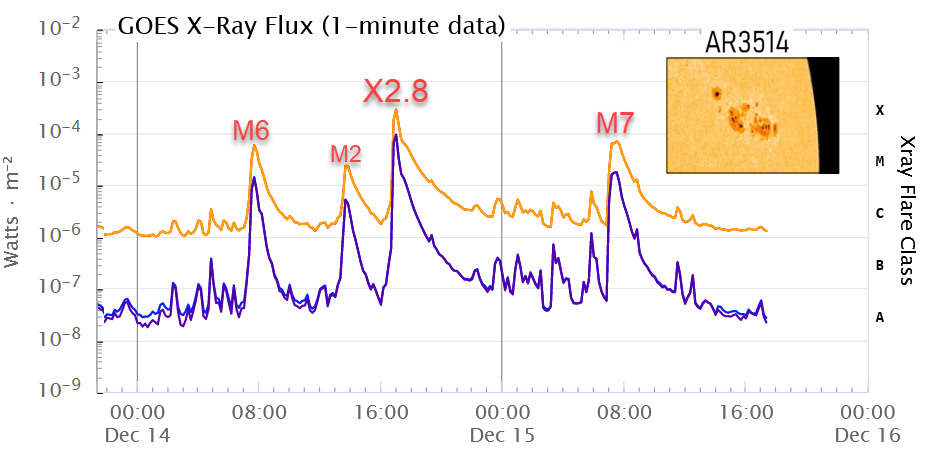Topics and links of the broadcast 27-12-2023 11:00 am (CEST)
IRTS HAREC Amateur Station Licence Study Guide (2023) by PD4Z
For native english speakers who want to study for the HAREC exams a pdf book can be downloaded for free, directly from the website of IRTS.
The Guide is available as a free PDF eBook. Please download it from here.
This 400-page book is self-contained, requiring only a few external references whilst studying. It covers all the aspects of amateur radio that the Irish HAREC exam syllabus requires, including radio theory, technology, and regulations. Our Study Guide contains detailed explanations making it particularly suited for self-study. It can also be used at taught courses, such as those provided by the National Short Wave Listeners Club, who are the Guide’s authors.
In addition to covering all the essentials, the Study Guide includes over 450 optional footnotes containing references, historical notes, and additional explanations that should make learning more informative for a reader looking for additional background information. All the footnotes can be skipped if needing to read the guide quickly, or when revising prior to the exam.
It should also be of interest to experienced amateurs, who would like to catch up, for example, on SDR technology, or on antenna safety.
As in the past, the editors would warmly welcome all feedback and corrections. Whilst this version of the guide will not be changed, all the feedback will be used to prepare a future edition of the guide. Please email your comments to publisher(at)irts.ie.
source: IRTS
Possible Carrington event: forecasts predicted a maximum between November 2024 and March 2026 by PD4Z
In recent weeks, solar activity and the auroras that are also visible in our region have been in the headlines again and again. In the coming months, the sun's activity will continue to increase and "space weather" will remain a topic. The sun is the source of all life, but it also poses a certain threat to our now highly technological world.
Most of us probably intuitively think of an asteroid impact, which has also been the subject of a number of films. However, another danger also comes from our sun. Its activity is subject to certain cycles, it has its own rhythm and pulse. We are currently in the ascending branch of the 25th solar cycle. At the beginning of this cycle, forecasts predicted a maximum between November 2024 and March 2026. However, solar activity in recent months has always been slightly above the modeled course, which is why the forecasts have now been adjusted slightly. The maximum of the current cycle is now expected between January and October 2024, which has been brought forward. The expected maximum number of sunspots has also been adjusted slightly upwards and is now between 137 and 173. The maximum number of spots during the maximum of the 24th cycle was only 119; the long-term average number of spots during such a maximum is 179. The sun's behavior is permanently monitored from Earth and with a number of space probes. If a coronal mass ejection (CME) occurs, it can now be easily categorized.
Source: Meteonews 12-12-2023
From RSGB news/ WRC-23 web page by PC5D
After four weeks of deliberations, the World Radiocommunication Conference 2023 (WRC-23) was formally concluded on Friday, December 15 in Dubai with, among other things, the signing of the 'Provisional Final Acts' and a closing ceremony. The many changes will not formally come into effect until January 1, 2025, and preparations are already underway to set the agenda for future WRC conferences. On the special focus pages of the RSGB you will find the latest news and photos. To do this, visit rsgb.org/wrc-23
On Thursday 14 December, the detailed WRC-23 business was finalized in preparation for the signing of the 'Provisional Final Acts' and the closing ceremony on Friday. The remaining major topics on the future of the UHF TV band and the 6G-IMT spectrum were not without controversy, but were ultimately approved.
The WRC-23 set a new record for future agenda items spanning the WRC-27 and provisional agenda items for the WRC-31. For the IARU, this means that preparations for the upcoming conferences must start immediately after WRC 23. A range of new topics are relevant or may affect the allocation of amateurs.
Although the AI-9.1b proposal was approved at the WRC-23, the 23cm story is far from over. As for the next CEPT/ITU-WRC cycle - the breadth and complexity of the new topics will require some attention and careful resources.
The UK Meteor Beacon project is now in its second phase. At the RSGB 2023 Convention, Brian Coleman, G4NNS, outlined the plan for the second phase. A network of receivers will be developed, transmitting their data through a central server for detailed study of individual meteor events. This is a collaboration between the 'worlds' of amateur radio and astronomy. You can watch Brian's presentation now on the RSGB YouTube channel at youtube.com/theRSGB
Radio propagation by PC5D
Propagation news is curated by Tom PC5D. In the composition he makes other use of the information relevant to the Netherlands from the weekly Propagation News of the British radio amateur association RSGB, dxinfocentre , darc.de/der-club/referate/hf/ , Make More Miles on VHF and poollicht.be. Propagation news is also part of the radio news of the South Limburg Sunday morning round. The audio recording of this round is back listened on a22.veron.nl
HF
From Wednesday to Thursday, several class C solar flares, two class M and a strong X2.8 class flare were observed in just 24 hours in the active area AR3514 (Thursday, Dec 14 /1702 UTC)

The latter was the strongest outburst of the current solar cycle 25 to date caused a coronal mass ejection (CME) and a long-lasting radio disturbance of class R3 over the American continent.
Solar activity remained moderate to active. The frequency of high-energy particles, i.e. high-energy protons, increased and reached the S1 level for proton storms. A solar radiation storm, also known as a solar proton event, is common after major eruptions on the sun. Protons are shot into space at incredibly high speeds speeds of up to 10,000 kilometers per second. These radiation storms reach the Earth only 30 minutes and can last for several days. The fast moving protons penetrate the magnetosphere and are guided along the magnetic field lines, causing they enter the atmosphere near the north and south poles. There they ionize the D layer and thus preventing the HF radio waves from reaching the higher E, F1 and F2 areas. Such radio disturbances are known as polar cap absorption events, or PCA. They can last for days.This means that little or no radio traffic is possible on shortwave on the transpolar routes.
The recent eruptions of M and X solar flares are creating geomagnetic storms probably on December 16 and 17, when several CMEs will affect the magnetic field of will hit the earth. A current NOAA model shows that these CMEs can merge into one storm front and strike together on the evening of December 16. For the night of 16 to 17 A G2 (moderate) geomagnetic storm warning was issued on December, with the possibility of a G3 (strong) category magnetic storm. This could then lead to visible damage Auroras around the North and Baltic Seas. A return to mostly calm to active geomagnetic conditions is only due probably at the beginning of the week, with periods with a Kp index of 3 to 4 and increased speed of the solar wind through coronal holes.
The problem with the solar wind is that the Bz is usually directed south, which means that it couples more easily with the Earth's magnetic field, creating solar plasma flows in. The result is then an increased Kp index.
NOAA expects the solar flux to drop from 145 to 132 in the coming days. The MUF will vary between 7 and over 30 MHz. This means that the 10-meter band would be open for five to seven hours should be around 0900 UTC outside of the above disruptions, and the 20 meter band should should be open for about eleven hours around 0700 UTC. At night the ionization is currently free long, so that 30 meters often remains usable for a long time, but this can change quickly. The long nights of course offer an opportunity for the lower bands, the so-called low bands, but only if the Earth's magnetic field is calmer again.
Next Friday is the winter solstice at 3:27 UTC. The Northern Hemisphere of the Earth is then furthest away from the sun and therefore receives less sunlight than on any other day. It is therefore the longest night of the year, with about 16 hours of it sunset to sunrise.
VHF - UHF, EME
As expected, the weather is currently determined by a powerful high-pressure area above Alps and the Balkans. The maps at https://www.dxinfocentre.com/tropo_nwe.html show this weekend and Monday increased to strong tropo conditions to France and the Gulf of Biscay. For a change, there are a number of days with less or no showers, so there will be some rain scatter little chance.
The other modes of meteorscatter and Aurora remain worth keeping an eye on. The peak of the Geminids is behind us, but this rain will last until the 20th and there are also some smaller meteor showers this month.
Sporadic-E propagation is often possible in the period from mid-December to mid-January 10 and 6m. For EME operators, the moon's declination is negative but increasing, becoming positive at Wednesday the 20th. Path losses are minimal at perigee, the moon's closest point - this was on Saturday the 16th. 144MHz sky noise is low all week.
